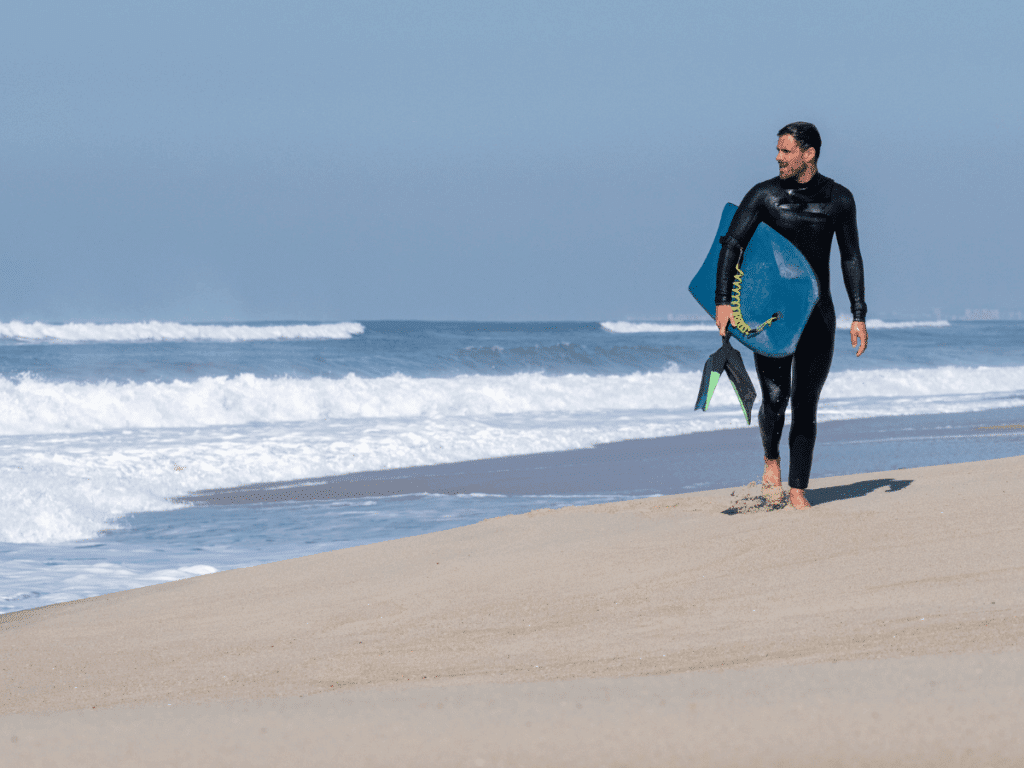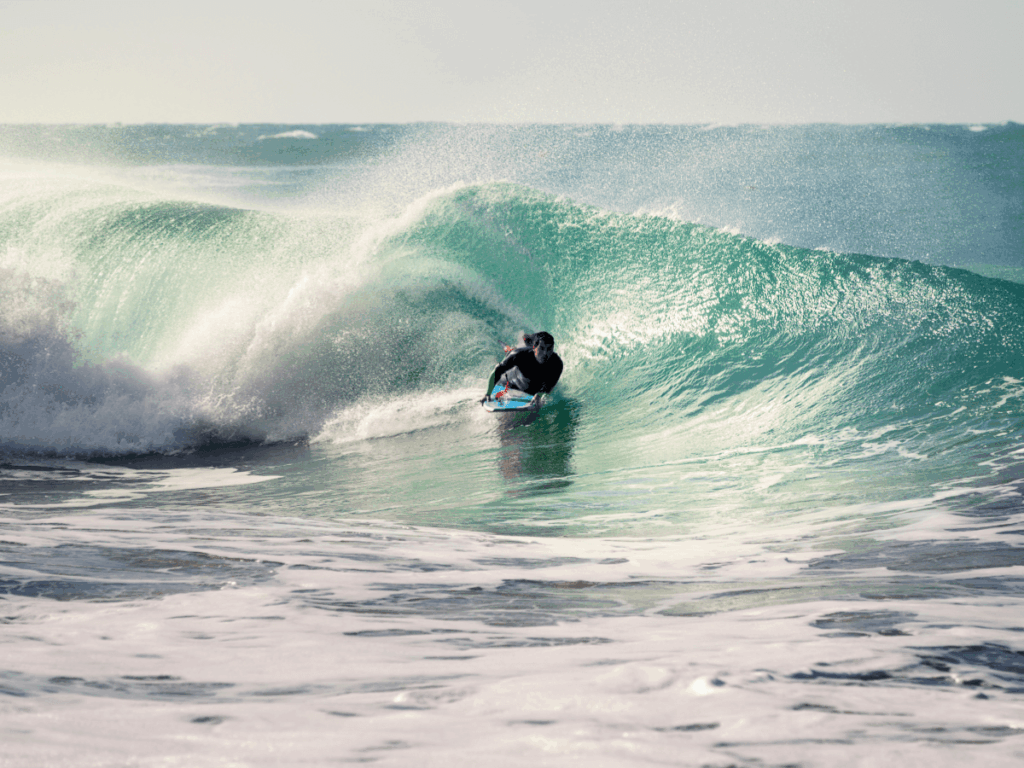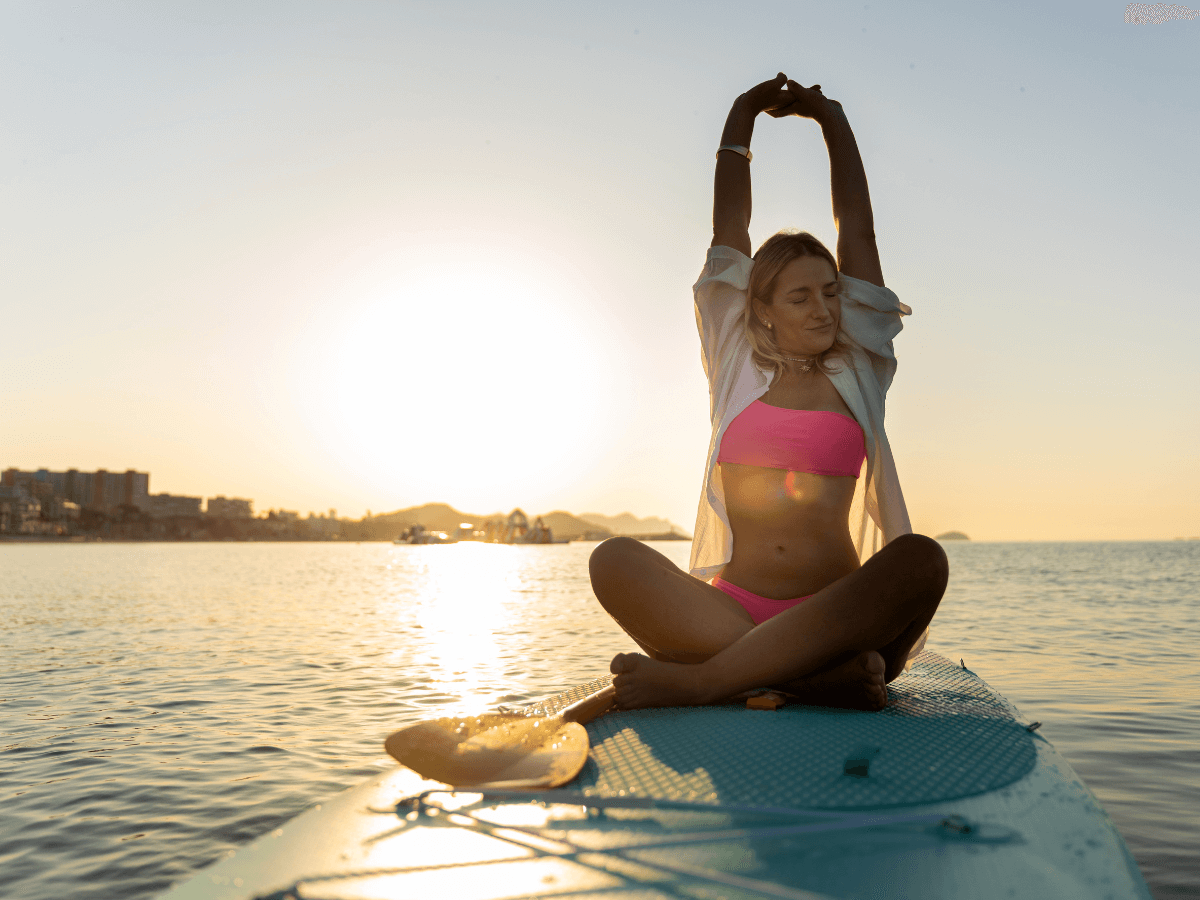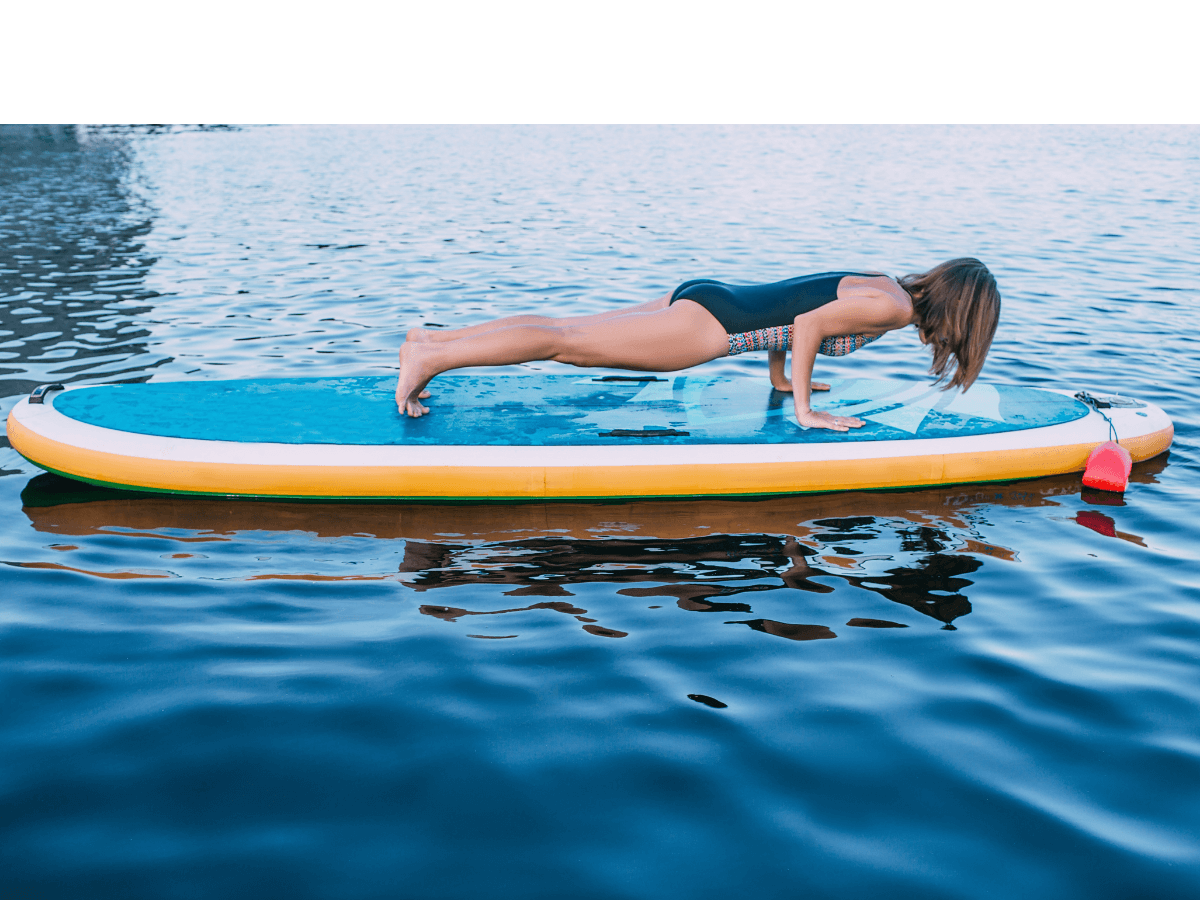Bodyboarding is an incredible water sport with people on the waves every day, soaking up every moment! Throughout this article, we are going to explore different points to help you find the perfect bodyboard for you, whether you’re brand new to bodyboarding or an expert. Let’s dive in!

Table of Contents
- What is Bodyboarding?
- Why is Bodyboarding Popular?
- Why Choosing the Right Bodyboard is Important
- What’s the Difference Between a Bodyboard and a Surfboard
- What are the Different Types of Bodyboards?
- Common Mistakes to Avoid When Choosing a Bodyboard
What is Bodyboarding?
Bodyboarding is a thrilling and fun water sport in which the rider uses a small, rectangular foam board to glide across the face of breaking waves whilst lying down. Different from traditional surfing, bodyboarding keeps you extremely close to the water, which offers a more stable and, in most cases, easier way to catch the waves, particularly for beginners!
At its core, bodyboarding is about understanding and reading the ocean, catching waves, and using your skills to manoeuvre through the surf. Whether you’re just on a small beach break or taking on powerful reef waves, bodyboarding is a versatile sport which everybody of all ages and skill levels can enjoy.
Why is Bodyboarding Popular?
Whether you’re just dipping your feet into the world of wave riding or you’re coming back after a break, bodyboarding is an incredible way to connect with the ocean and experience the thrill of surfin’ in an approachable and unique way.
- Fun in All Conditions: You don’t need huge waves to enjoy bodyboarding – small shore breaks can be just as thrilling.
- Portable and Affordable: Bodyboards are lightweight and often more budget-friendly than surfboards.
- Beginner-Friendly: The learning curve is gentle compared to stand-up surfing.

Why Choosing the Right Bodyboard is Important
Not all bodyboards are created equal, and picking the right one can make the difference between a frustrating day at the beach and an unforgettable ride. Let’s go through some key points on why choosing the right bodyboard is essential:
- A better fit means a better experience!
The right bodyboard is tailored to your body size, skill level, and the types of waves you’ll be riding. If your board is too small, you’ll struggle to catch waves and stay balanced. If it’s too big or too stiff, it may be hard to control. A well-matched board feels like an extension of your body, allowing you to glide with ease and confidence.
- Progress faster and have fun.
A bodyboard suited to your ability helps you improve faster. Beginners benefit from boards with more buoyancy and stability, while experienced riders need boards that offer speed and manoeuvrability. By choosing a board that matches where you are in your bodyboarding journey, you’ll progress more quickly and also have way more fun doing it!
- Staying safe.
Safety is essential. Using a board that’s too advanced or inappropriate for your local conditions can put you at risk. The right bodyboard supports you in the water and helps you stay in control, especially in challenging waves or crowded spots.
- Saving your money in the long run.
While it may be tempting to grab the cheapest board you can find, a poor-quality or ill-fitting bodyboard will likely need replacing sooner and might keep you from enjoying the sport. Investing in a well-matched, durable board upfront can save you money and hassle down the line.
What’s the Difference Between a Bodyboard and a Surfboard?
At first glance, bodyboards and surfboards might seem similar; they are both used to ride the waves at the end of the day! However, once you actually get into the water, the differences become extremely clear. Understanding how each board works will help you decide which is right for you, your goals, comfort level, and style. Let’s explore some differences:
Riding Position:
- Bodyboard: You ride lying down (prone), although advanced riders may occasionally kneel or drop-knee.
- Surfboard: You ride standing up, which requires more balance, coordination, and practice to master
Shape & Size
- Bodyboard: Short, rectangular, and typically between 91 and 111cm (36 and 44 inches ) long. Compact and lightweight, designed for quick manoeuvring in waves.
- Surfboard: Long and narrow, usually ranging from 5 to 9 feet/1.5 to 2.7 metres (or more), with a pointed nose and fins on the bottom for direction and control.
Materials
- Bodyboard: Made from dense foam cores (like PE or PP), offering flexibility, buoyancy, and durability.
- Surfboard: Usually built from polyurethane or expanded polystyrene foam, covered in fibreglass and resin for a hard, slick finish.
Learning Curve
- Bodyboard: Easier for beginners to pick up. Less intimidating, quicker to learn, and more stable due to the prone position.
- Surfboard: Requires more time and practice to master. Balancing and paddling while standing takes coordination and strength.
Manoeuvrability & Wave Types
- Bodyboard: Great for steep, fast-breaking waves and barrels. Excellent control for spins and rolls.
- Surfboard: Better for carving turns, trimming, and riding longer waves with style and flow.
Accessibility
- Bodyboard: More portable, affordable, and suitable for a broader range of wave conditions. Ideal for younger riders or casual beachgoers.
- Surfboard: Requires more storage, transport, and a greater commitment to skill development.
Which is right for you?
It’s hard to say as it depends on what you would personally prefer and enjoy more, but if you’re starting and want something easier to manage, bodyboarding is an excellent choice. However, if you’re more interested in the athletic challenge of standing and surfing longer, consider trying surfing later on down the line.

What are the Different Types of Bodyboards?
Not all bodyboards are built the same. They come in different shapes, sizes, materials, and constructions, each affecting how the board performs in the water. Understanding these differences will help you choose a board that suits your style, skill level, and local wave conditions.
Core Materials
The core is the heart of your bodyboard; it determines how flexible, durable, and responsive the board feels.
- Polyethylene (PE) – Soft, flexible, and ideal for cold water.
Great for beginners and intermediate riders who want more control and cushion. PE boards tend to feel more forgiving but may be slightly heavier.
- Polypropylene (PP) – Lightweight, stiff, and great for warm water.
Offers more speed and responsiveness. Ideal for experienced riders who want to perform tricks or ride powerful waves.
- NGR (Next Generation Resin)
A newer, hybrid material with qualities between PE and PP. Offers good flexibility, lightweight performance, and durability.
Tail Shapes
- Crescent Tail: Most common and beginner-friendly. It offers excellent control and comfort and is great for prone (lying down) riding in all wave types.
- Bat Tail: Provides more lift and speed, especially in smaller waves. Slightly looser feel, best for advanced riders or drop-knee style.
Rails (The Board’s Edges)
Rails are the side edges of your bodyboard and affect how it grips the wave.
- 50/50 Rails
Balanced between speed and control, great for intermediate riders.
- 60/40
More control and hold, great for carving turns and steep waves. Ideal for beginners or riders who prioritise control over speed.
Deck and Slick Materials
Deck (Top): Usually made from softer foam (like cross-linked polyethylene) for comfort and grip.
Slick (Bottom): Made from materials like Surlyn or HDPE.
- Surlyn Slick: High-performance, durable, and fast. Used in premium boards.
- HDPE Slick: Cheaper and less durable, but still functional for entry-level riders.
Reinforcement Rods
Stringers are internal rods (usually made from fibreglass or carbon) that add stiffness and longevity.
- No Stinger: More flex, better for soft waves and beginner-friendly boards.
- Single or Double Stingers: Added stiffness and durability for heavier or advanced riders, especially in powerful surf.
Now, let’s put all of that together! When selecting your bodyboard, consider how these features combine:
| Feature | Beginner | Intermediate | Advanced |
| Core | PE | PE or PP | PP |
| Tail | Crescent | Crescent or Bat | Bat |
| Rails | 60/40 | 50/50 | 50/50 or Custom |
| Slick | HDPE | Surlyn or HDPE | Surlyn |
| Stinger | Optional | 1 Stinger | 1-2 Stingers |
Choosing the right bodyboard isn’t just about the flashiest design or coolest brand; it’s about finding a board that matches your experience and helps you get the most out of every session, whether you’re brand new to the sport or looking to level up.

Common Mistakes to Avoid When Choosing a Bodyboard
Selecting a bodyboard can be exciting, but it’s easy to get overwhelmed or misled, especially with so many choices on the market. To save you time, money, and frustration, here are some of the most common mistakes people make when buying a bodyboard, and how to avoid them.
Choosing the wrong size
The mistake: Picking a board that’s too small or too large for your body.
Why it matters: A poorly sized board makes it harder to catch waves and stay balanced.
What to do: Match your board to your height and weight. A properly sized board should reach about your belly button when standing on the ground. (We’ll cover exact sizing in the next section.)
Buying based on looks alone
The mistake: Choosing a board because it has a cool design or colour.
Why it matters: Graphics don’t affect performance, core materials, shape, and construction do.
What to do: Focus on the technical specs: core type, tail shape, slick material, and stringers. Choose function over fashion. It’s a bonus if it does what you need it to, and you love the look of it!
Skipping the core material check
The mistake: Not paying attention to the core material (PE vs. PP).
Why it matters: The core determines how the board feels and performs in different water temperatures.
What to do:
- PE for cold water and more flex
- PP for warm water and more stiffness/speed
- Make sure it fits the conditions you’ll ride in most.
Ignoring wave conditions
The mistake: Buying a board designed for conditions you rarely surf.
Why it matters: Boards perform differently in small shore breaks vs. heavy reef waves.
What to do: Pick a board that fits your local surf. Small waves? Go with more buoyancy and flex. Big, fast waves? Choose a stiffer, performance board with Surlyn slick and stringers.
Ignoring the quality to save some money
The mistake: Going for the cheapest option without checking durability.
Why it matters: Low-end boards often warp, snap, or lose performance quickly, costing more over time.
What to do: Buy the best board within your budget. Look for trusted brands and reviews, especially for beginners.
By taking the time to avoid these common pitfalls, you’ll be set up for a more enjoyable, safer, and faster start in the water.
If you enjoyed this article, be sure to check out our previous one: The Go-To Bodyboarding Setup: What You Need to Know & Why. We release weekly articles on either bodyboarding, SUP, or winter sports, so why not bookmark?





